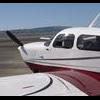Bladders vs. Reseal
-
Members Online
- DonMuncy
- MikeOH
- Phil EF
- A64Pilot
- Slick Nick
- Pinecone
- Matthew P
- 1980Mooney
- Red Leader
- richardbrochu27
- hoot777
- Vintagevalves
- Jim F
- ta2too
- GeeBee
- Patrick Horan
- Lumberg
- toto
- ProtoFly
- Fly Boomer
- 201Steve
- Bruce Temple
- Shaun E Barry
- mluvara
- M20F
- LooneyMooney
- TCC
- Jetdriver
- cliffy
- Fritz1
- KernalSanderz
- Crawfish
- AH64Bennett
- jma201
- eman1200


Recommended Posts
Join the conversation
You can post now and register later. If you have an account, sign in now to post with your account.